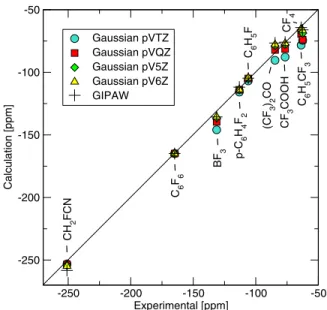Ab initio converse NMR approach for pseudopotentials
Texte intégral
Figure




Documents relatifs
The goal of this paper is to show that there are strong relations between certain Monge-Amp`ere integrals appearing in holomorphic Morse inequalities, and asymptotic
The point where sufficient titrant has been added to be stoichiometrically equivalent to the amount of analyte.. Just enough titrant has been added to react with all of
Beyond that, we must address the Spreadsheet Software Engineering Paradox—that computer scientists and information systems researchers have focused on spreadsheet creation aspects
This paper is organized as follows: Section 2 describes time and space discretiza- tions using gauge formulation, Section 3 provides error analysis and estimates for the
In dimension two, Demailly proved in [Dem11] an asymptotic version of this converse to the Andreotti–Grauert theorem using tools related to the holomorphic Morse inequality
— The goal ofthis paper is to show that there are strong rela- tions between certain Monge-Amp`ere integrals appearing in holomorphic Morse inequalities, and asymptotic
In this paper we show that a linear variational inequality over an infinite dimensional real Hilbert space admits solutions for every nonempty bounded closed and convex set, if and
Because it is needed in the proof of Theorem 1, we state, as in Theorem D below, a recent related result of Saff and Varga [3, theorem 2] on Hermite interpolation in the